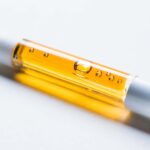Burning incense may pose health risks, including respiratory dysfunction and allergic reactions, for those with allergies and asthma.
RT’s Three Key Takeaways:
- Incense Burning Linked to Respiratory Issues: A case study found that daily incense burning contributed to shortness of breath and worsened respiratory dysfunction in a patient with asthma and COPD.
- Health Risks of Incense Smoke: Incense smoke contains harmful compounds, including carcinogens and particulate matter, which can lead to respiratory dysfunction, headaches, and allergic reactions.
- Safer Alternatives Recommended: Health practitioners suggest alternatives like electric incense devices or improved ventilation to reduce the health risks associated with traditional incense burning.
Burning incense can pose health risks for those with allergies and asthma, according to a new medically challenging case being presented at this year’s American College of Allergy, Asthma and Immunology (ACAAI) Annual Scientific Meeting in Boston.
“Our patient was an 87-year-old woman with history of asthma and COPD, on oxygen therapy, who presented with unexplained shortness of breath,” says Gomeo Lam, BA, lead author on the paper, in a release. “A detailed history revealed daily incense burning. We recommended she stop burning incense, which the patient did not want to do as burning joss stick incense daily allowed her to express homage and veneration for ancestors. We then advised she use electric incense devices, which resulted in improvement of her symptoms.”
Incense Poses Health Risks
The paper points out that burning incense poses health risks including headaches, respiratory dysfunction, dermatologic sensitivity and allergic reactions. Incense fumes contain carbon, sulfur, nitrogen oxides as well as formaldehyde, and other polycyclic aromatic volatile compounds which are carcinogenic. Per gram burned, particulate matter generated from incense is 45 mg versus 10 mg from cigarettes.
“People who burn incense may not realize that family members, including children, who are exposed to secondhand smoke, face health consequences,” says allergist Mary Lee-Wong, MD, senior author of the study and ACAAI member, in a release. “Similar to tobacco smoke, thirdhand incense smoke may linger in furniture, clothing, and other articles, dissipating for months afterward.”
The authors point out that, besides health implications, incense combustion contributes to air pollution and can be a fire hazard. They recommend that when counseling patients who burn incense, health practitioners consider the sacred significance of incense burning, but also recognize that health risks from this practice cannot be overlooked.
After screening patients for incense use, healthcare practitioners can recommend replacement with electric or aromatic vapors; simulated visuals; improved ventilation; and limiting burn time as approaches to mitigate harms and improve symptoms.
ID 2592560 © Ilya Avdyushev | Dreamstime.com









